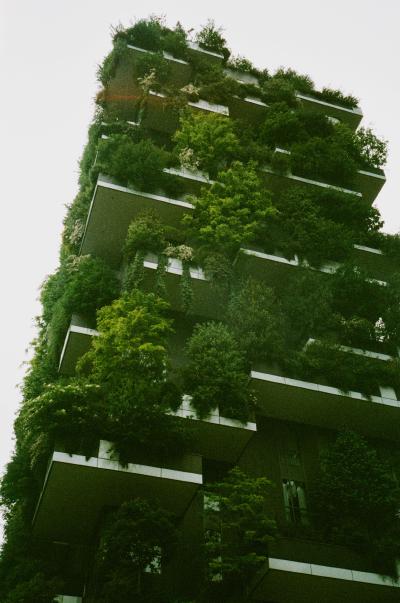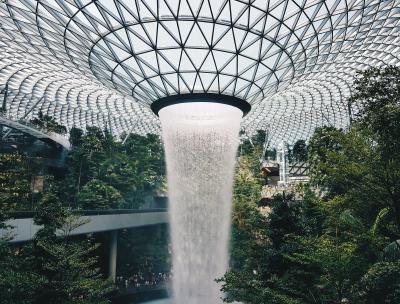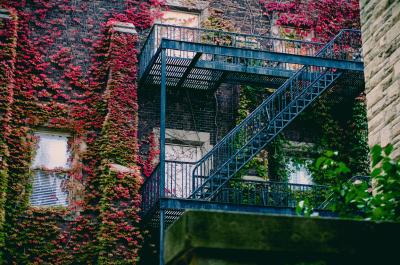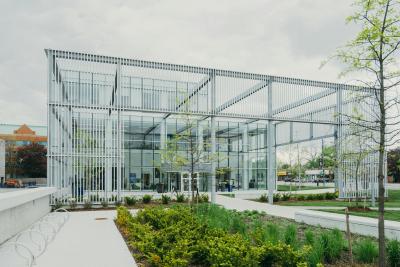Why We Need More Green spaces in Our Lives
 Urban living isn’t just about towering buildings and busy streets. It’s also about finding pockets of nature in unexpected places. That’s where green spaces come in. These little havens—parks, community gardens, even rooftop gardens—are like a secret stash of calm in the hustle and bustle. Imagine sitting under a big shady tree with a book or taking a stroll along a path lined with flowers and chirping birds. That’s the magic of green spaces right in the heart of our neighborhoods.
Urban living isn’t just about towering buildings and busy streets. It’s also about finding pockets of nature in unexpected places. That’s where green spaces come in. These little havens—parks, community gardens, even rooftop gardens—are like a secret stash of calm in the hustle and bustle. Imagine sitting under a big shady tree with a book or taking a stroll along a path lined with flowers and chirping birds. That’s the magic of green spaces right in the heart of our neighborhoods.
Let’s talk about them! Look at your nearby the cozy corner park where kids run around and dogs wag their tails in excitement. Then there’s the rooftop garden atop a skyscraper, a mini-forest of sorts offering breathtaking views and a serene escape from the urban chaos. Oh, and community gardens bursting with veggies and vibrant blooms tended to by local enthusiasts. These spots aren’t just pretty—they’re proven to boost our physical and mental health. That’s right, science backs up what we’ve always felt: being around greenery is like a natural mood booster!
Ever notice how some neighborhoods just feel better with more trees and parks? That’s the quality of green space in action. They’re not just pretty additions; they’re like superheroes fighting against things like air pollution and urban stress. Plus, they’re all about equality—everyone deserves a slice of green paradise. So, whether it’s a tiny park bench oasis or a sprawling community garden, these spots aren’t just pretty faces; they’re making our cities healthier and happier, one tree at a time.
1. Understanding Green Spaces
Green spaces, think of those charming parks or invigorating rooftop gardens you strolled by, are perhaps the most underrated superheroes in our urban landscapes. They are the oasis of nature tucked amidst the concrete jungles, acting as the bulwark against air pollution and urban stress. These open spaces stand as a testament to the fusion of urban planning and a love for nature. Plus, there’s an undeniable charm to this greening: they make neighborhoods feel like a literal breath of fresh air. Beyond that, though, there’s a whole world of benefits tied up in these patches of green—the World Health Organization champions them as key players in our overall health and well-being.
Here are some examples of places you might have come across:
-
Community Gardens: These shared plots of land often emerge in unused corners of the city, transformed by community members into vibrant patches of green where vegetables, fruits, herbs, and flowers are cultivated.
-
Rooftop Gardens: These are small green oases atop urban buildings, offering a refuge from the hustle-bustle of city life while also contributing to the building’s thermal regulation.
-
Green Walls: Also known as vertical gardens or living walls, these are walls completely covered with greenery, often incorporated on the exterior or interior of buildings.
-
Highway Verges and Medians: Surprisingly, highway verges and medians can serve as green spaces too, when thoughtfully incorporated with planting schemes. They provide aesthetic relief and habitat for small creatures while also acting as carbon sinks.
-
Railway Corridors: Abandoned railway tracks can be transformed into linear parks or green corridors, such as the famous High Line park in New York City.
-
Urban Farms: Farms in the city may seem out of place, but they’re increasingly becoming part of the urban landscape, offering locally grown produce and education about sustainable farming.
-
Floating Gardens: This is an innovative solution where lightweight gardens are designed to float on city waterways, like in Rotterdam, Netherlands.
-
Bioswales: A bioswale is a landscape element designed to remove silt and pollution from surface runoff water. They combine vegetation and soil to filter rainwater runoff, not only serving a practical use in stormwater management but also adding to the beauty of the urban landscape.
2. The Benefits of Urban Greenery
 Urban green spaces provide a flurry of benefits beyond their scenic appeal. According to recent studies, green space is associated with lower rates of cardiovascular diseases and fewer annual deaths—the trees in our urban landscape playing a silent, yet potent role in our health. Moreover, parks and green spaces are not just aesthetically pleasing but therapeutic. A collection of studies confirms improved mental health and less mental health problems are seen among city dwellers who have more access to green spaces. Moreover, these spaces offer exclusive opportunities for physical activity, becoming islands of fitness amidst the urban land. These perks aren’t just a fashion statement for greener cities in 2021, but the evidence-backed advantages are prompting urban planners across the globe to incorporate more green spaces in urban areas for a healthier, happier population. Learn more about mindfulness practices and their connection with nature in the article on discovering mindfulness.
Urban green spaces provide a flurry of benefits beyond their scenic appeal. According to recent studies, green space is associated with lower rates of cardiovascular diseases and fewer annual deaths—the trees in our urban landscape playing a silent, yet potent role in our health. Moreover, parks and green spaces are not just aesthetically pleasing but therapeutic. A collection of studies confirms improved mental health and less mental health problems are seen among city dwellers who have more access to green spaces. Moreover, these spaces offer exclusive opportunities for physical activity, becoming islands of fitness amidst the urban land. These perks aren’t just a fashion statement for greener cities in 2021, but the evidence-backed advantages are prompting urban planners across the globe to incorporate more green spaces in urban areas for a healthier, happier population. Learn more about mindfulness practices and their connection with nature in the article on discovering mindfulness.
3. Access to Green Spaces: A Crucial Aspect
Ideally, a city should ensure access to urban green spaces for all its residents, a concept not just appealing but imperative for improving the residents’ quality of life. Public space that is covered in greenery boosts morale, bringing a breath of fresh air into the monotony of city life. The World Health Organization underscores how green space access isn’t just about introducing an open green space into the urban environments – it’s about providing natural areas that function as lifelines amidst the city’s buzz. These easily accessible green havens level the socioeconomic disparities, ensuring quality life isn’t a luxury but a right for all, becoming key social determinants of health.
4. Nature’s Contribution to Mental and Physical Health
The importance of green spaces goes above and beyond contributing to the environment and climate change mitigation. The urban forest, our trees, grass, and open spaces, become our personal therapists, resulting in significant health impacts. They reduce psychological stress and create an atmosphere of tranquility, acting as nature’s power-ups for our mental and physical wellbeing. Several studies have found the association between the presence of natural environments and positive health indicators, the reason why urban trees have become a critical part of the urban planning agenda.
Click here to learn more about stress management for busy people.
5. Green Infrastructure: A Sustainable Solution
 Manifesting the concept of green infrastructure within the urban setup is integral to the development of sustainable cities. By incorporating more green areas in the blueprint of our cities, we play our part in environmental stewardship and societal well-being. A focus on public open spaces and green structures not only adds a visual appeal but significantly reduces the urban heat island effect. This, in turn, ameliorates the overall climate resilience of the city. Injected into our urban design, these green spaces also promote community-level health perspectives by ensuring access to parks within walking distance for every resident, significantly reducing health inequalities.
Manifesting the concept of green infrastructure within the urban setup is integral to the development of sustainable cities. By incorporating more green areas in the blueprint of our cities, we play our part in environmental stewardship and societal well-being. A focus on public open spaces and green structures not only adds a visual appeal but significantly reduces the urban heat island effect. This, in turn, ameliorates the overall climate resilience of the city. Injected into our urban design, these green spaces also promote community-level health perspectives by ensuring access to parks within walking distance for every resident, significantly reducing health inequalities.
6. The Impact of Green Streets and Rooftops
One innovative way friendly infrastructure is being integrated is through green streets and green roofs, which are, essentially, your regular roads and rooftops, but better, greener, and healthier. One study found these features to be highly effective in reducing ambient air pollution and enhancing air quality within the urban spaces. Beyond the apparent ecological benefits, they also contribute significantly to better mental health among the residents.

Not only do green streets and rooftops, in addition to providing aesthetic retreats, insulate against heat and noise, but they also serve as miniature habitats supporting biodiversity, a critical but often overlooked aspect. Besides, they cool down the city by tempering the heat island effects, mitigating not only the temperature but also the associated health effects. With less green space, cities battle higher temperatures, pollution, and their adverse impacts. On the contrary, a city with more planned green infrastructure boosts the quality of life for residents while curbing the urban heat island impact extensively.
According to Catharine Ward Thompson, “Green streets and roofs are not an amenity but a necessity in cities.” They help in recalibrating the adverse morbidity and mortality rates associated with air pollution and heat stress. It’s of no surprise then, that European cities have embraced this sustainable land-use approach and are extensively opting for greening their urban spaces.
While every green patch, every planted tree, contributes to mitigating environmental issues, the psychological benefits associated with access to such green spaces that are accessible to the public cannot be ignored. As cities continue to grow and evolve, it is vital to consider nature as an integral part of urban planning. The benefits of green infrastructure span beyond the ecosystem services, bridging the gap between the economy and social dynamics towards sustainable development and health promotion.
7. Enhancing Urban Life through Biodiversity
The importance of biodiversity within urban settings extends beyond being a mere nature’s spectacle to being a strong instrument of ecological balance and community well-being. Green spaces may seem ordinary, but they are vital hotspots of forest biodiversity threaded into our urban fabric. Each organism, from the tiniest insect to the tallest tree, plays a unique role in maintaining a robust ecosystem capable of enhancing urban resilience against climatic adversities. A city brimming with biodiversity, especially in public green spaces, ensures lesser health impacts like heat-stroke-related deaths each year. So even as cities grow, incorporating green strands of biodiversity in urban development is imperative.
8. Social Dynamics and Economic Benefits
 Examining the influence of green spaces on social interaction, local businesses, and economic opportunities Green spaces are not just patches of green—they hold an invisible force that positively influences social interaction, local businesses, and economic opportunities within urban precincts. They are vibrant areas outside our homes and offices, inviting a mix of activities and events, thus catalyzing community building. The presence of green spaces stimulates local economies as more people are drawn to urban areas with well-maintained parks and gardens. Thriving businesses, in turn, add value to the local economy. Therefore, green spaces should be viewed not just as environmental necessities but as economic powerhouses too.
Examining the influence of green spaces on social interaction, local businesses, and economic opportunities Green spaces are not just patches of green—they hold an invisible force that positively influences social interaction, local businesses, and economic opportunities within urban precincts. They are vibrant areas outside our homes and offices, inviting a mix of activities and events, thus catalyzing community building. The presence of green spaces stimulates local economies as more people are drawn to urban areas with well-maintained parks and gardens. Thriving businesses, in turn, add value to the local economy. Therefore, green spaces should be viewed not just as environmental necessities but as economic powerhouses too.
9. Environmental Justice and Accessible Greenery
Green spaces have an indisputable role in serving environmental justice. The need for accessible and equitable green spaces for all demographics is paramount. No one should be denied the joy and benefits of having a park or garden close to their dwelling. Access to green spaces should not be a privilege of a particular class or community; rather, it should be an integral element of urban planning. This focus on equitable access ensures fair distribution of greenery throughout the city, tackling the challenges posed by environmental justice.
10. Towards a Greener Future: Policy and Practice
Apart from the physical incorporation, the success of urban green spaces significantly leans on policy-making and community involvement. Policies promoting green spaces pave the way for city planning that takes into account the environment and community’s well-being. It ensures that green spaces become an essential part of urban landscapes rather than an afterthought. Effective policies paired with consistent community engagement make the preservation and enhancement of these spaces feasible. Hence, as we venture towards a greener future, the balance and interaction of policy, practice, and people make green spaces a pulsating part of our cities.
Summary of Key Takeaways:
- Green spaces contribute to mental and physical health.
- Urban greenery mitigates environmental issues like air pollution.
- Equitable access to green spaces is vital for community well-being.
- Policy and community engagement are pivotal for a greener future.
- Environment and community go hand-in-hand
FAQ:
Having green spaces around us is really important. They give us clean air to breathe, and are great places to play and relax which can help us feel better and less stressed out.
Parks and gardens in cities, if not run by volunteers, need a lot of money to keep them nice and can sometimes have bugs or animals that are not good for people. Green spaces are also known to get vandalized if not monitored.
Examples include community gardens, rooftop gardens, green walls, highway verges, railway corridors turned into parks, urban farms, floating gardens, and bioswales.
They reduce cardiovascular diseases, improve mental health, offer opportunities for physical activity, and show positive health indicators among city dwellers.
They mitigate air pollution, regulate climate, support biodiversity, and aid in stormwater management.
They promote social interaction, boost local economies, address environmental justice, and enhance quality of life.
By strategic planning, community engagement, policy implementation, and maintaining diversity in green space creation.